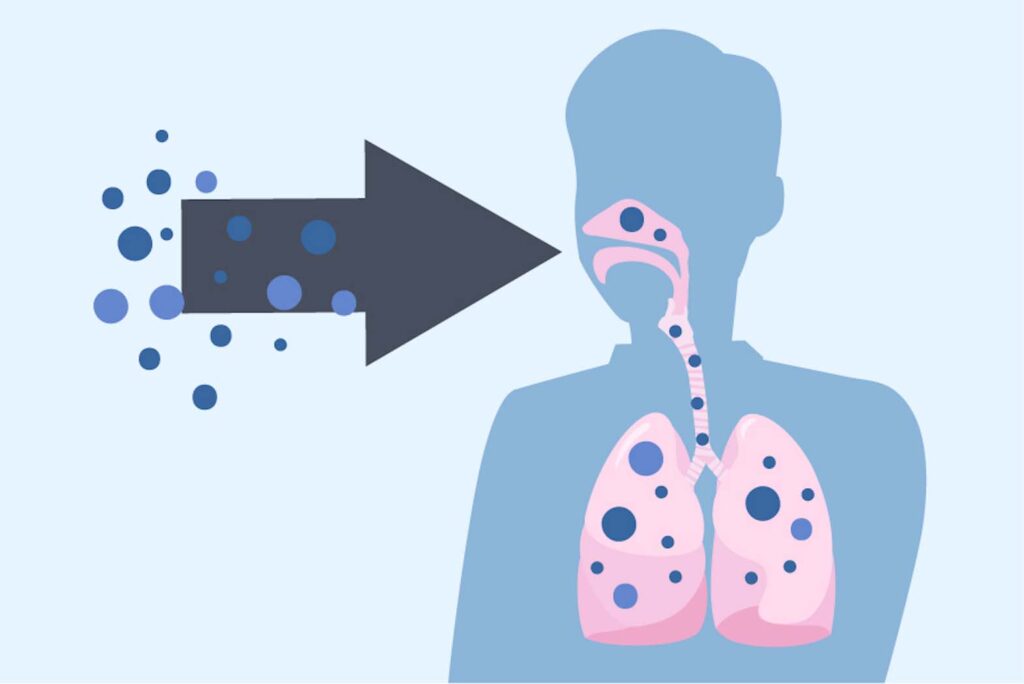California warns of increased risk of valley fever among Blacks and Filipinos

Valley fever, also known as coccidioidomycosis or “cocci,” usually affects the lungs and can cause prolonged respiratory symptoms including cough, fever, chest pain, and fatigue or tiredness. CDC
SACRAMENTO — California’s Department of Public Health and local health departments are alerting the public and health care providers to increased risk of valley fever in the state.
Valley fever, also known as coccidioidomycosis or “cocci,” usually affects the lungs and can cause prolonged respiratory symptoms including cough, fever, chest pain, and fatigue or tiredness. These symptoms can result in people missing work, school, and activities they enjoy.
Because many valley fever infections take place during the summer, August has been designated as Valley Fever Awareness Month.
“California’s dry conditions, combined with recent heavy winter rains could results in increasing valley fever cases in the coming months,” said CDPH Director and State Public Health Officer Dr. Tomás Aragón.
While anyone can get valley fever, people most likely to get valley fever include individuals who live, work, or travel in areas with high rates of valley fever, especially if they participate in outdoor activities that involve close contact with dirt or dust.
Other groups are at higher risk of severe valley fever if they become infected, including people who are Black or Filipino, adults 60 years or older, pregnant women, and people with diabetes, cancer, or conditions that weaken the immune system.
You may like: Valley fever cases in Calif. rise to record level; highest in farm areas
“Individuals with lingering cough and fatigue should talk to a health care provider about Valley fever, especially if they have been outdoors in dusty air.”
While valley fever shares many of the same symptoms with other respiratory diseases (including COVID-19), its symptoms can last a month or more, and laboratory tests are needed to know whether symptoms are caused by valley fever or another illness.
If a person tests negative for COVID-19 but continues to have respiratory symptoms that last more than a week, they should talk to a doctor and ask if their symptoms could be valley fever. If valley fever is diagnosed, your doctor will determine if you need treatment.
Because valley fever is caused by breathing in a fungus from dust in outdoor air, it can be difficult to prevent infection.
Practical tips may help prevent valley fever in areas with high rates:
• When it is windy outside and the air is dusty, stay indoors and keep windows and doors closed.
• Before digging, wet down soil and dirt to prevent stirring up dust into the air.
• Consider wearing a properly fitted N95 mask if you must be in dusty air outdoors in these areas.
CDPH encourages people who live, work, or visit in areas where valley fever is common to learn about the signs and symptoms of valley fever and the ways to help reduce the risk of infection.
Employers with employees working outdoors in these areas should train workers about valley fever symptoms and take steps to limit exposure to dust, such as watering down soil before digging.
A potential increase in cases
New research by the University of California, Berkeley and CDPH shows that during drought, the fungus that causes valley fever can become less active. However, when the rains return, the fungus can grow, leading to increases in infection.
Cases of valley fever in California have historically been lowest during years of drought and highest during years immediately after a drought.
The wet winter season California experienced could lead to more valley fever cases this summer and fall.
About 20,000 valley fever cases are reported in the U.S. each year, mostly from Arizona and California, and the number of cases is increasing.
Rates of valley fever in California continue to be highest in the Central Valley and Central Coast regions, including Kern, Kings, San Luis Obispo, Fresno, Tulare, Madera, and Monterey counties.

